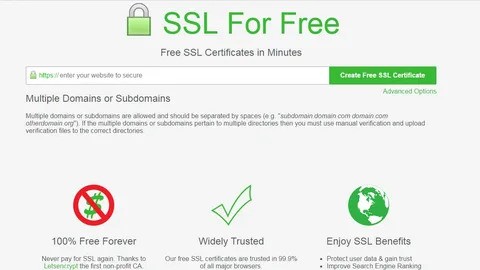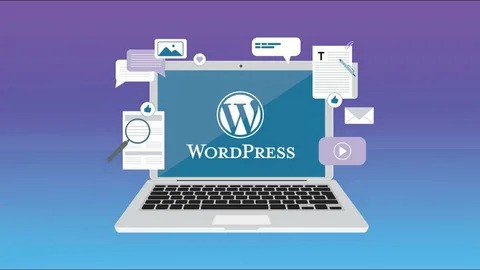Let’s be blunt.
You’ve probably asked yourself this:
“Why pay for hosting when there are free options everywhere?”
It’s a fair question—and in 2025, with dozens of “free website hosting” platforms claiming unlimited everything, the line between free and paid hosting feels blurrier than ever.
But here’s the deal: free hosting always comes with a catch. Sometimes it’s subtle (limited bandwidth). Other times, it’s brutal (forced ads, data limits, slow speeds).
In this article, we’re breaking down Free Hosting vs Paid Hosting without the fluff—just the facts, trade-offs, and real-world consequences.
If you’re building a blog, business site, or AdSense-optimized site, this guide will help you decide what actually makes sense in 2025.
🆓 What is Free Hosting (Really)?
Free hosting is exactly what it sounds like—web hosting services that don’t charge you for server space, bandwidth, or basic tools.
Popular examples:
- GitHub Pages
- Netlify
- Google Sites
- InfinityFree
- WordPress.com (Free tier)
But you’re not really the customer—you’re the product, or you’re on the hook for a limited trial that’s designed to upsell you later.
💰 What is Paid Hosting?
Paid hosting means you’re paying for access to a dedicated server environment, resources, and support. This can include:
- Shared hosting (e.g., Bluehost, Hostinger)
- VPS or cloud hosting (e.g., DigitalOcean, AWS)
- Managed WordPress hosting (e.g., Kinsta, WP Engine)
It’s not expensive anymore. In fact, many entry-level hosting plans cost less than your Netflix subscription—$2 to $5 per month, and they come with perks free plans don’t touch.
🔍 Free Hosting vs Paid Hosting: Side-by-Side Breakdown
| Feature | Free Hosting | Paid Hosting |
|---|---|---|
| Cost | $0 (usually with limitations) | Starts at $2–$10/month |
| Custom Domain Support | Often limited | Full support |
| Storage & Bandwidth | Capped (500MB–1GB) | Scales from 10GB+ |
| Speed & Uptime | Shared, slow, occasional downtime | Optimized servers, 99.9% uptime |
| Ads | Often forced on your site | None |
| Monetization (AdSense, Affiliates) | Restricted or not allowed | Fully allowed |
| Security Features (SSL, backups) | Basic or none | Full SSL, firewalls, backups |
| Support | Community only | 24/7 customer support |
| Control Panel (cPanel, SSH, etc.) | Usually none | Full access |
| Email Hosting | Not included | Usually included or add-on |
| CMS Options (e.g. WordPress) | Very limited | Full flexibility |
🎯 When Free Hosting Makes Sense
Let’s be clear—it’s not all bad. Free hosting does have its place, especially if you’re just getting started.
✅ Good for:
- Testing a new idea or blog
- Student portfolios
- Resume sites
- Single-page affiliate landers
- Static documentation
- Internal business tools
🧠 Real-World Use Case:
You’re building a blog on GitHub Pages using Jekyll and targeting long-tail VPN affiliate keywords. Low overhead, fast page load, and simple setup.
Result? Not bad—until you want to add email capture forms, WordPress plugins, or get AdSense approval.
⚠️ The Real Catch with Free Hosting
Here’s what they don’t tell you up front:
1. Branding & Ads
Most free hosts slap their logo, footer, or even banner ads on your site. It kills credibility, especially if you’re running a business or trying to sell services.
Want to remove them? That’s a paid upgrade.
2. Lack of Monetization Support
Google AdSense doesn’t approve free subdomains like:
yoursite.wordpress.comyourname.github.io
You need a custom domain, which usually means buying hosting or paying for a domain + upgrade plan.
3. SEO Limitations
Free hosts often block bots or limit control over:
- Meta tags
- 301 redirects
- Page speed
- Structured data
If you’re building a content site targeting high-CPC keywords, SEO is your lifeline. Free hosts handicap you.
4. Speed, Uptime, and Reliability
On free platforms, you’re sharing limited server resources with thousands of others. Expect:
- Slow page loads
- Downtime during traffic spikes
- No service-level guarantees
This can tank your bounce rate, rankings, and user trust.
5. Limited Control
Forget about installing custom plugins, running PHP, managing MySQL, or scaling storage on most free hosting plans.
You’re boxed in—and when you hit the ceiling, guess what?
You pay to upgrade anyway.
💎 When Paid Hosting is Worth Every Penny
Paid hosting isn’t just about bells and whistles—it’s about control, performance, and profit.
✅ Perfect for:
- High-traffic blogs
- Online businesses
- AdSense/affiliate websites
- Email marketing campaigns
- E-commerce (Shopify alternative via WooCommerce)
🔥 Real-World Monetization Case:
You build a blog about cybersecurity tools using Hostinger’s $2/month WordPress plan.
You write SEO-optimized content targeting “Best VPNs for Dubai” (avg. CPC: $3.50+).
You get 300 visitors/day.
That’s potentially $200–$500/month in AdSense or affiliate commissions.
And yes—you couldn’t do that with free hosting.
💡 Still Not Sure? Ask Yourself These 5 Questions:
- Do I want to monetize my site (AdSense, affiliates, services)?
If yes, paid hosting is required. - Do I need my own domain?
Most free platforms give subdomains. That’s not a real brand. - Will I scale traffic over time?
Free plans don’t scale. Paid ones do. - Do I need support if something breaks?
Good luck getting help on free hosting. - Is my brand’s credibility important?
Branded footers, slow sites, and forced ads hurt trust.
🧮 Cost Breakdown: Paid Hosting Isn’t Expensive
| Hosting Provider | Starting Price | Features |
|---|---|---|
| Hostinger | $2.49/month | Free domain, WordPress, SSL, email |
| Bluehost | $2.95/month | WordPress optimized, free domain, cPanel |
| Namecheap Stellar | $1.98/month | Fast, beginner-friendly |
| SiteGround | $3.99/month | Blazing speed + customer support |
| Cloudways (DigitalOcean) | $11/month | Cloud hosting for scaling blogs/apps |
Pro tip: Start small. Upgrade only when you outgrow your plan.
🧠 Final Verdict: Free Hosting vs Paid Hosting
| Scenario | Verdict |
|---|---|
| Building a personal portfolio or testing ideas | ✅ Free Hosting is fine |
| Starting a blog for AdSense or affiliate income | ❌ Go Paid |
| Launching a real business or agency | ❌ Go Paid |
| Hosting a static landing page or documentation | ✅ Free Hosting works |
| Scaling traffic, SEO, or e-commerce | ❌ Paid is mandatory |
🧲 Bottom Line
Free hosting is good to start with—but never to grow with.
It’s like training wheels: useful at first, but hold you back when it’s time to scale.
If you’re serious about traffic, conversions, or income in 2025, get paid hosting. It pays for itself—and then some.
Need Help Choosing the Right Host?
Tell us your use case (blog, product, portfolio, etc.), and we’ll recommend the best free or paid host for your situation.



